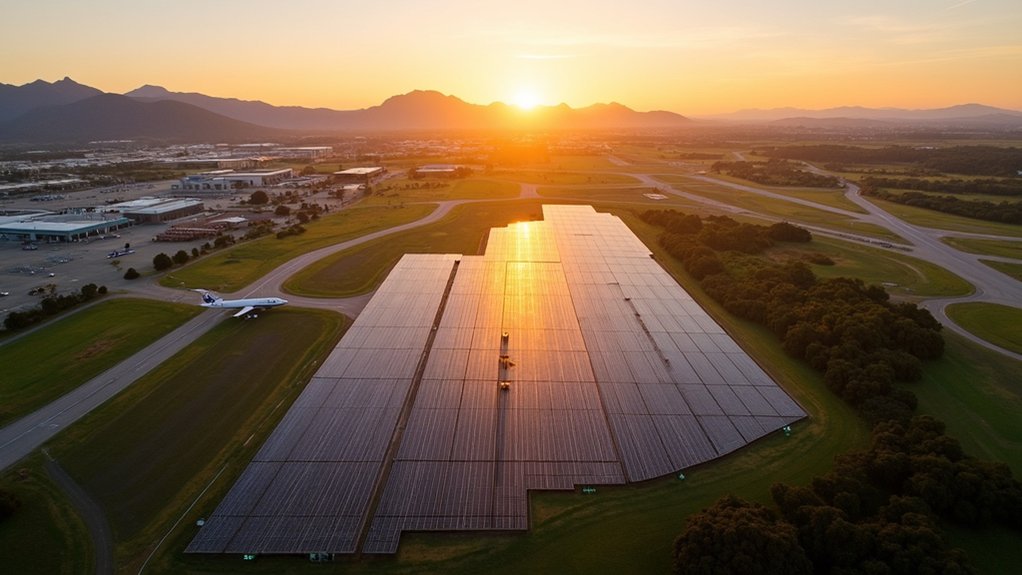While most airports still spew carbon like it’s going out of style, Christchurch Airport is busy flipping the script. The New Zealand hub just snagged Platinum Category Winner status from Airports Council International’s Green Airports Recognition 2025, joining only three other airports worldwide at this elite level. Not too shabby.
Their massive Kōwhai Park solar farm project is nothing to sneeze at. We’re talking 300,000 solar panels sprawled across 230 hectares of airport land. Once completed, it’ll generate enough juice to power 36,000 homes. The joint venture with Contact Energy and Lightsource bp isn’t just about looking good on paper—it’s positioning the airport as a serious clean energy hub. Unlike fossil fuel power plants, their geothermal initiatives produce 99% less emissions while maintaining consistent energy supply.
Let’s get real about their emissions. They’ve slashed Scope 1 emissions by 90%. The remaining 10%? Still a headache due to technological barriers, but they’re offsetting that through native forestry restoration. They’re not just aiming for carbon neutral; they’re going 25% beyond that. Overachievers. The airport reached Level 5 ACA status, demonstrating their leadership in comprehensive carbon management.
Slashing 90% of emissions isn’t enough for these eco-warriors. They’re offsetting the rest and then some—talk about climate karma.
Most airports talk a big game. Christchurch walks it. They follow the Ministry for Environment’s best practices and document everything. Transparency, what a concept.
They’re not keeping their green secrets to themselves either. The airport regularly shares knowledge with other airports and organizations worldwide. Their partnerships extend beyond the tarmac, working with stakeholders to reduce environmental impacts across the board.
Data nerds will appreciate their use of frameworks like PACE to track emissions. No guesswork here—just cold, hard numbers guiding decisions. Their collaboration with PACE provides real-time data on Scope 3 emissions that enables targeted reduction efforts.
Aviation has long been the environmental villain in transportation. But Christchurch Airport is showing the industry doesn’t have to be a lost cause. Their approach is straightforward: measure emissions, cut them drastically, offset what you can’t eliminate, and be transparent about the whole process.
Who knew airports could be climate champions? Turns out, the Kiwis did.
References
- https://www.christchurchairport.co.nz/about-us/who-we-are/media/2025/christchurch-airport-announces-international-green-airports-award/
- https://www.christchurchairport.co.nz/globalassets/about-us/sustainability/dr-piers-locke—christchurch-airport-sustainability-journey.pdf
- https://www.fexco.com/news-and-insights/cutting-carbon-emissions-at-christchurch-airport-and-the-role-of-pace/
- https://www.travelandtourworld.com/news/article/christchurch-airport-earns-global-recognition-for-sustainability-with-kowhai-park-solar-initiative-and-net-zero-leadership-why-you-need-to-visit-now-before-everyone-else-does/
- https://www.internationalairportreview.com/news/176190/world-class-sustainability-achievement-for-christchurch-airport/








